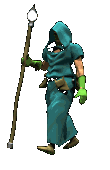إقترح ترجمة لهذا النبات الطبي Abies amabilis - Douglas. ex Forbes. Red Fir
 إقترح ترجمة لهذا النبات الطبي Abies amabilis - Douglas. ex Forbes. Red Fir
إقترح ترجمة لهذا النبات الطبي Abies amabilis - Douglas. ex Forbes. Red Fir
Abies amabilis -
Douglas. ex Forbes.
Red Fir

Physical Characteristics
icon of man icon of decid tree An evergreen Tree growing to 30m by 5m at a slow rate.
It is hardy to zone 5. It is in leaf all year, and the seeds ripen in October. The flowers are monoecious (individual flowers are either male or female, but both sexes can be found on the same plant) and are pollinated by Wind.
The plant prefers light (sandy), medium (loamy) and heavy (clay) soils and can grow in heavy clay soil. The plant prefers acid and neutral soils. It can grow in full shade (deep woodland) semi-shade (light woodland) or no shade. It requires moist soil. The plant is not wind tolerant. It cannot tolerate atmospheric pollution.
Habitats
Woodland Garden; Canopy;
Edible Uses
Edible Parts: Inner bark.
Edible Uses: Gum; Tea.
Young shoot tips are used as a substitute for tea[177, 183]. The pitch obtained from the bark can be hardened (probably by immersing it in cold water[K]) and used as a chewing gum[257]. Inner bark[257]. No further information is given, but inner bark can be dried, ground into a powder and then used with grain flours etc to make bread and other preparations[257].
Medicinal Uses
Plants For A Future can not take any responsibility for any adverse effects from the use of plants. Always seek advice from a professional before using a plant medicinally.
This plant was used quite widely by native North American Indians. An infusion of the bark was used as a tonic and to treat stomach ailments, TB, haemorrhoids and various minor complaints[257]. The pitch, or resin, was also used to treat colds, sore throats etc[257]. The bark of this tree contains blisters that are filled with a resin called 'Canadian Balsam'[226]. Although the report does not mention the uses of this resin, it can almost certainly be used in the same ways as the resin of A. balsamea, as detailed below:- The resin obtained from this tree (see 'Uses notes' below) has been used throughout the world and is a very effective antiseptic and healing agent. It is used as a healing and analgesic protective covering for burns, bruises, wounds and sores[213, 222, 226]. It is also used to treat sore nipples[213] and is said to be one of the best curatives for a sore throat[245]. The resin is also antiscorbutic, diuretic, stimulant and tonic[4, 171, 222]. It is used internally in propriety mixtures to treat coughs and diarrhoea, though taken in excess it is purgative[238]. A warm liquid of the gummy sap was drunk as a treatment for gonorrhoea[212]. A tea made from the leaves is antiscorbutic[4, 171]. It is used in the treatment of coughs, colds and fevers[222]. The leaves and young shoots are best harvested in the spring and dried for later use[238].
Other Uses
Wood.
The boughs are fragrant and can be hung in the home as an air freshener[257]. Wood - hard, light, not strong, close grained, not very durable. It is used for framing small buildings but is not strong enough for larger buildings. It is also used for crates, pulp etc[46, 61, 82, 226, 229]. This tree yields the resin 'Canadian Balsam'[226]. The report does not mention the uses of this balsam, but the following are the ways that it is used when obtained from A. balsamea:- The balsamic resin 'Balm of Gilead'[11, 46] or 'Canada Balsam' according to other reports[64, 226, 238] is obtained during July and August from blisters in the bark or by cutting pockets in the wood[222]. Another report says that it is a turpentine[171]. It is used medicinally and in dentistry, also in the manufacture of glues, candles and as a cement for microscopes and slides - it has a high refractive index resembling that of glass[11, 46, 64, 82, 222, 226, 238]. The average yield is about 8 - 10 oz per tree[171]. The resin is also a fixative in soaps and perfumery[171, 238].
Cultivation details
Requires a good moist but not water-logged soil in a sheltered position[1]. Grows well in heavy clay soils. Plants are very shade tolerant[11, 81] but growth is slower in dense shade[81]. Intolerant of atmospheric pollution[1]. Prefers slightly acid conditions down to a pH of about 5[200]. Prefers growing on a north-facing slope[200]. Trees are somewhat shallow rooted and are therefore susceptible to strong winds[229]. Grows best in the Perthshire valleys of Scotland[11]. It does very well on glacial moraines in Scotland[81]. When grown in an open position, the tree clothes itself to the ground with gracefully drooping branches, though on the whole, this species does not grow well in Britain[11]. Trees have been of variable growth in this country and seem to be short-lived[185]. The best and fastest growing specimens are to be found in the north and far west of the country[185]. Growth in girth can be very quick, 1.8 metres in 35 years has been recorded[185]. Trees should be planted into their permanent positions when they are quite small, between 30 and 90cm in height. Larger trees will check badly and hardly put on any growth for several years. This also badly affects root development and wind resistance[200]. The crushed leaves have an odour like orange peel[11]. Plants are strongly outbreeding, self-fertilized seed usually grows poorly[200]. They hybridize freely with other members of this genus[200]. This species is often confused with A. nordmanniana[11]. A very ornamental plant[1]. Trees are sometimes grown as 'Christmas trees'[200]. Plants are susceptible to injury by aphis[11].
Propagation
Seed - sow early February in a greenhouse or outdoors in March[78]. Germination is often poor, usually taking about 6 - 8 weeks[78]. Stratification is said to produce a more even germination so it is probably best to sow the seed in a cold frame as soon as it is ripe in the autumn[80, 113]. The seed remains viable for up to 5 years if it is well stored[113]. When large enough to handle, prick the seedlings out into individual pots and grow them on for at least their first winter in pots. Plant them out into their permanent positions in late spring or early summer, after the last expected frosts. Alternatively, if you have sufficient seed, it is possible to sow in an outdoor seedbed. One report says that it is best to grow the seedlings on in the shade at a density of about 550 plants per square metre[78] whilst another report says that they are best grown on in a sunny position[80].
Douglas. ex Forbes.
Red Fir
| Author | Douglas. ex Forbes. | Botanical references | 11, 60, 200 |
| Family | Pinaceae | Genus | Abies |
| Synonyms | |||
| Known Hazards | None known | ||
| Range | North-western N. America - Alaska to Oregon. | ||
| Habitat | High mountain slopes and benches, going down to sea-level in the north of its range[82]. The best specimens grow in deep moist soils and cool wet air conditions such as fog belts[229]. | ||
| Edibility Rating | Medicinal Rating | ||
Physical Characteristics
icon of man icon of decid tree An evergreen Tree growing to 30m by 5m at a slow rate.
It is hardy to zone 5. It is in leaf all year, and the seeds ripen in October. The flowers are monoecious (individual flowers are either male or female, but both sexes can be found on the same plant) and are pollinated by Wind.
The plant prefers light (sandy), medium (loamy) and heavy (clay) soils and can grow in heavy clay soil. The plant prefers acid and neutral soils. It can grow in full shade (deep woodland) semi-shade (light woodland) or no shade. It requires moist soil. The plant is not wind tolerant. It cannot tolerate atmospheric pollution.
Habitats
Woodland Garden; Canopy;
Edible Uses
Edible Parts: Inner bark.
Edible Uses: Gum; Tea.
Young shoot tips are used as a substitute for tea[177, 183]. The pitch obtained from the bark can be hardened (probably by immersing it in cold water[K]) and used as a chewing gum[257]. Inner bark[257]. No further information is given, but inner bark can be dried, ground into a powder and then used with grain flours etc to make bread and other preparations[257].
Medicinal Uses
Plants For A Future can not take any responsibility for any adverse effects from the use of plants. Always seek advice from a professional before using a plant medicinally.
This plant was used quite widely by native North American Indians. An infusion of the bark was used as a tonic and to treat stomach ailments, TB, haemorrhoids and various minor complaints[257]. The pitch, or resin, was also used to treat colds, sore throats etc[257]. The bark of this tree contains blisters that are filled with a resin called 'Canadian Balsam'[226]. Although the report does not mention the uses of this resin, it can almost certainly be used in the same ways as the resin of A. balsamea, as detailed below:- The resin obtained from this tree (see 'Uses notes' below) has been used throughout the world and is a very effective antiseptic and healing agent. It is used as a healing and analgesic protective covering for burns, bruises, wounds and sores[213, 222, 226]. It is also used to treat sore nipples[213] and is said to be one of the best curatives for a sore throat[245]. The resin is also antiscorbutic, diuretic, stimulant and tonic[4, 171, 222]. It is used internally in propriety mixtures to treat coughs and diarrhoea, though taken in excess it is purgative[238]. A warm liquid of the gummy sap was drunk as a treatment for gonorrhoea[212]. A tea made from the leaves is antiscorbutic[4, 171]. It is used in the treatment of coughs, colds and fevers[222]. The leaves and young shoots are best harvested in the spring and dried for later use[238].
Other Uses
Wood.
The boughs are fragrant and can be hung in the home as an air freshener[257]. Wood - hard, light, not strong, close grained, not very durable. It is used for framing small buildings but is not strong enough for larger buildings. It is also used for crates, pulp etc[46, 61, 82, 226, 229]. This tree yields the resin 'Canadian Balsam'[226]. The report does not mention the uses of this balsam, but the following are the ways that it is used when obtained from A. balsamea:- The balsamic resin 'Balm of Gilead'[11, 46] or 'Canada Balsam' according to other reports[64, 226, 238] is obtained during July and August from blisters in the bark or by cutting pockets in the wood[222]. Another report says that it is a turpentine[171]. It is used medicinally and in dentistry, also in the manufacture of glues, candles and as a cement for microscopes and slides - it has a high refractive index resembling that of glass[11, 46, 64, 82, 222, 226, 238]. The average yield is about 8 - 10 oz per tree[171]. The resin is also a fixative in soaps and perfumery[171, 238].
Cultivation details
Requires a good moist but not water-logged soil in a sheltered position[1]. Grows well in heavy clay soils. Plants are very shade tolerant[11, 81] but growth is slower in dense shade[81]. Intolerant of atmospheric pollution[1]. Prefers slightly acid conditions down to a pH of about 5[200]. Prefers growing on a north-facing slope[200]. Trees are somewhat shallow rooted and are therefore susceptible to strong winds[229]. Grows best in the Perthshire valleys of Scotland[11]. It does very well on glacial moraines in Scotland[81]. When grown in an open position, the tree clothes itself to the ground with gracefully drooping branches, though on the whole, this species does not grow well in Britain[11]. Trees have been of variable growth in this country and seem to be short-lived[185]. The best and fastest growing specimens are to be found in the north and far west of the country[185]. Growth in girth can be very quick, 1.8 metres in 35 years has been recorded[185]. Trees should be planted into their permanent positions when they are quite small, between 30 and 90cm in height. Larger trees will check badly and hardly put on any growth for several years. This also badly affects root development and wind resistance[200]. The crushed leaves have an odour like orange peel[11]. Plants are strongly outbreeding, self-fertilized seed usually grows poorly[200]. They hybridize freely with other members of this genus[200]. This species is often confused with A. nordmanniana[11]. A very ornamental plant[1]. Trees are sometimes grown as 'Christmas trees'[200]. Plants are susceptible to injury by aphis[11].
Propagation
Seed - sow early February in a greenhouse or outdoors in March[78]. Germination is often poor, usually taking about 6 - 8 weeks[78]. Stratification is said to produce a more even germination so it is probably best to sow the seed in a cold frame as soon as it is ripe in the autumn[80, 113]. The seed remains viable for up to 5 years if it is well stored[113]. When large enough to handle, prick the seedlings out into individual pots and grow them on for at least their first winter in pots. Plant them out into their permanent positions in late spring or early summer, after the last expected frosts. Alternatively, if you have sufficient seed, it is possible to sow in an outdoor seedbed. One report says that it is best to grow the seedlings on in the shade at a density of about 550 plants per square metre[78] whilst another report says that they are best grown on in a sunny position[80].
 مواضيع مماثلة
مواضيع مماثلة» إقترح ترجمة لهذا النبات الطبي Abies alba - Mill. Silver Fir
» إقترح ترجمة لهذا النبات الطبي Abies balsamea - (L.)Mill. Balsam Fir
» إقترح ترجمة لهذا النبات الطبي Abies cephalonica - Loudon. Grecian Fir
» إقترح ترجمة لهذا النبات الطبي Abies firma - Siebold.&Zucc. Momi Fir
» إقترح ترجمة لهذا النبات الطبي Abies concolor - (Gordon.&Glend.)Lindl. ex Hildebrand. Colorado Fir
» إقترح ترجمة لهذا النبات الطبي Abies balsamea - (L.)Mill. Balsam Fir
» إقترح ترجمة لهذا النبات الطبي Abies cephalonica - Loudon. Grecian Fir
» إقترح ترجمة لهذا النبات الطبي Abies firma - Siebold.&Zucc. Momi Fir
» إقترح ترجمة لهذا النبات الطبي Abies concolor - (Gordon.&Glend.)Lindl. ex Hildebrand. Colorado Fir
صلاحيات هذا المنتدى:
لاتستطيع الرد على المواضيع في هذا المنتدى

 البوابة
البوابة أحدث الصور
أحدث الصور




